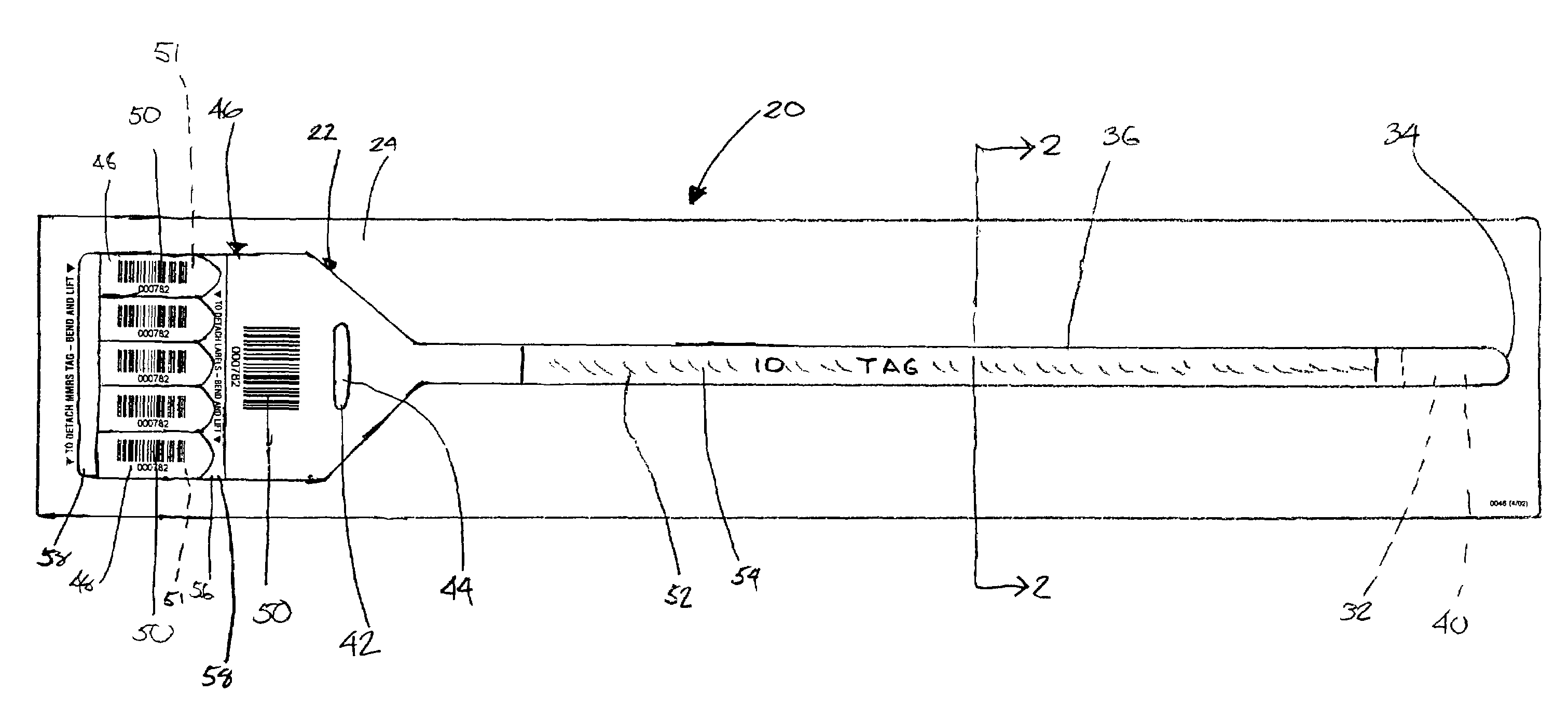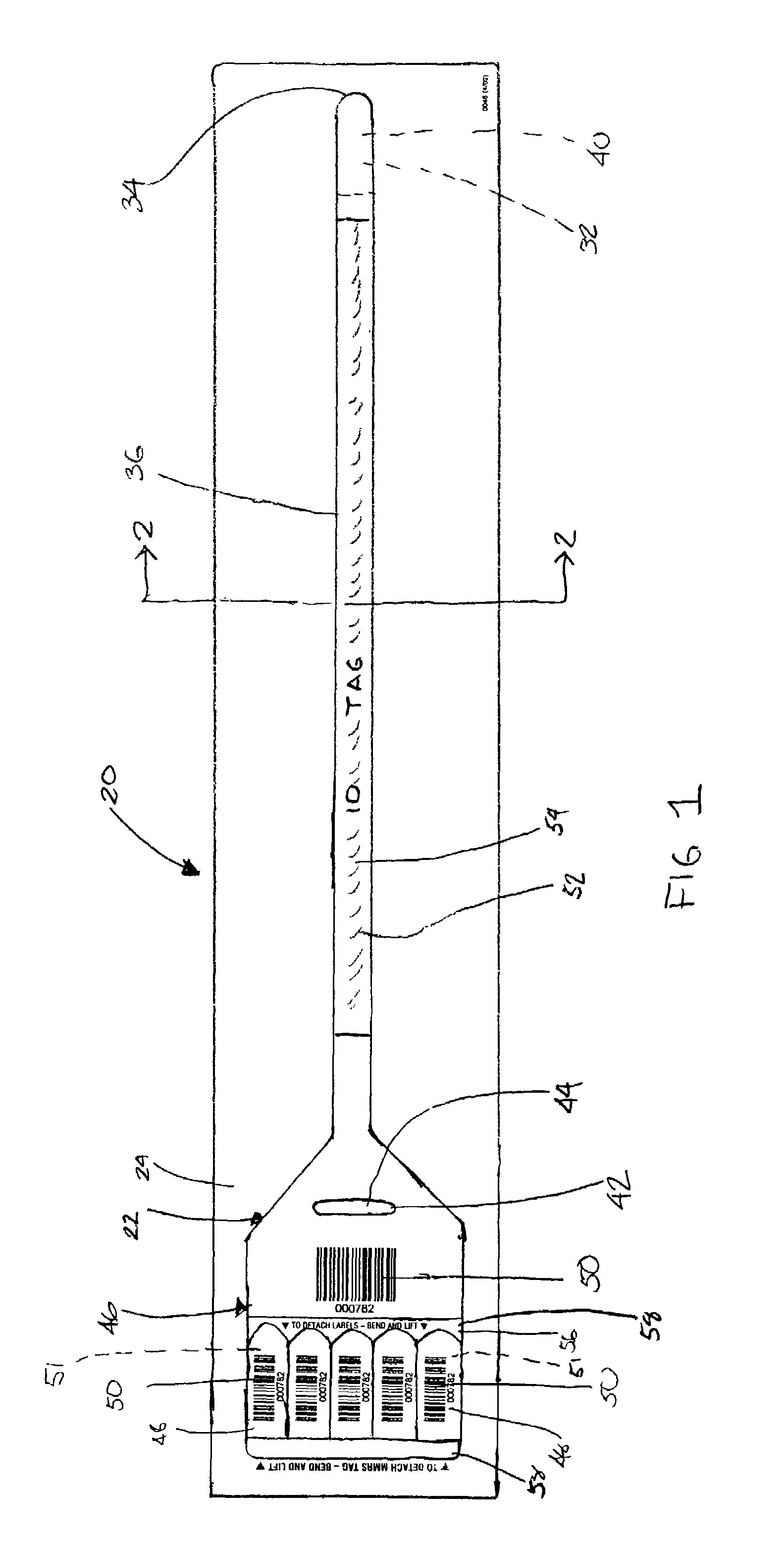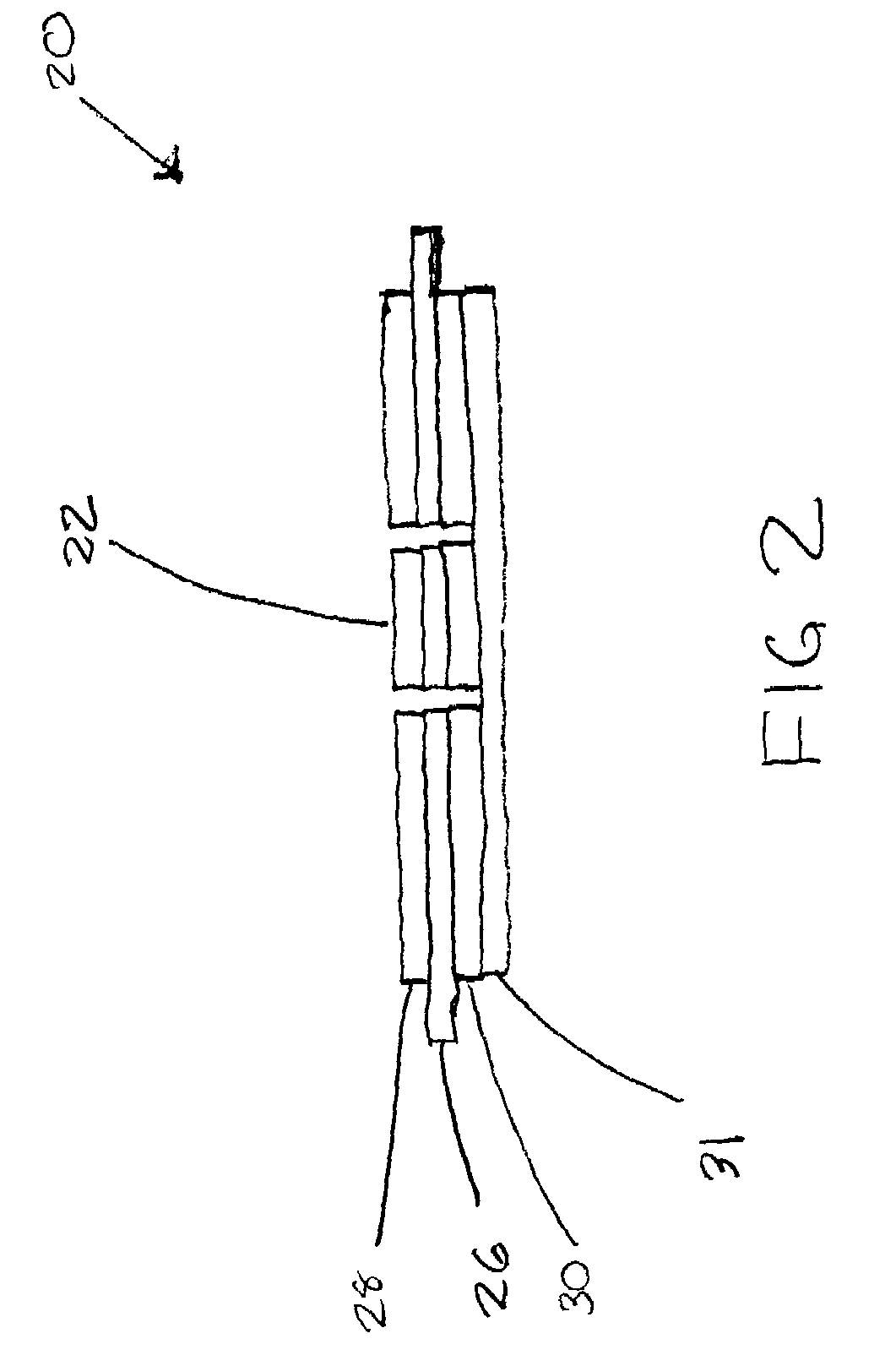[0002]Another aspect to the situation that must be considered is that it is not uncommon for different care takers to
handle a single victim. Generally, when a victim is first attended, he is categorized for the nature and extent of his injuries. Then, in those situations where there is a mis-match between the number of victims and the number of medical personnel, the most severely injured are attended to first and the remainder are treated as time becomes available. This is routine, and an attempt to minimize
loss of life in what can be a desperate situation. Thus, it is commonly required to “
triage” the victims, and then identify them in some way that makes it immediately apparent to medical workers just what their medical situation is. This sounds easy, but in the chaos of these situations, even with medical personnel who are well trained, there can be
lost time in this process and if a good strategy is not used for this classifying, victims can be mis-identified or their status not readily ascertainable after classification, so that the precious time of these “angels of mercy” can be needlessly wasted as they move from one victim to another.
[0003]This type of emergency situation creates needs that are unique, beyond the needs of a form intended for use in a
clean environment available in an emergency room. As mentioned, medical personnel are usually wearing gloves and in a hurry. Thus, any form that would be used must be adapted to be easily handled with clumsy fingers. There is no time for instruction, so the form must be virtually intuitive for use. There are commonly fluids present, unfortunately most often blood and other body fluids, so the form must be protected. There needs to be a simple, fast, fool-proof way to apply the form to the victim, and his possessions, with a reliable way to link them together. There is a further need to be able to quickly collect the identifying information from the form as it is attached to a victim so he may be processed quickly and the information accurately collected. The identifying information commonly needs to be thought out in advance, and might even be pre-coded to mesh with the
triage operation so that merely knowing the identifying information conveys some information about victim medical status. And, there is desirably some flexibility available in use of the form to accommodate different victim conditions.
[0005]To solve these and other needs in the prior art, the inventor herein has developed a business form in several embodiments and a method that have particular application to these kind of
medical emergency situations. Briefly, a first embodiment of the form comprises a carrier sheet of paper stock, with a wristband /
label assembly die
cut thereinto for separation from the carrier sheet. The paper stock is preferably pre-printed with identifying indicia, color coded and covered top and bottom with a layer of protective
coating which may preferably be a poly plastic. The wristband / label
assembly may be dry adhered to a bottom layer of a carrier film so that it may be readily separated from the carrier without retaining any
adhesive. The wristband portion of the assembly may have a tab on one end and a long strap portion which, to be assembled, is wrapped around an object such as a victim's
wrist, looped back through a “cinch” comprising a slot in the tab and then adhered to itself by an
adhesive portion at the end of the strap portion. The tab preferably has a plurality of individually separable labels die
cut thereinto, with each of the labels and the wristband having an identifying indicia which may preferably be a bar code.
[0006]In use, the wristband / label assembly is separated from the carrier, carrying the tab filled with labels, and the strap portion. The cinch slot is die
cut and formed as the assembly is separated with its filler piece adhered to remain behind with the bottom film carrier sheet. The strap portion has its end covered with a laminated bottom patch so that as it separates it carries with it a peel away covering over its end having the
adhesive. After being separated from the carrier, the wristband / label assembly has a protective layer over both its top and bottom for resisting fluid
contamination and the tab has a label section which may be perforated for separation from the wristband. Each of the labels are individually separable and carry the identifying indicia. The wristband may preferably be color coded, and the forms may be made in sets with multiple ones of each of a number of different colors. Alternately, color coded, perforated tabs may be provided at the end of the tab portion, such that the medical
technician need only separate one or more tabs, leaving as the outside tab the correct one to visually indicate the condition of the victim. A blank tab is preferably provided at the very edge of the tab portion so that no one would mistakenly interpret the failure to separate a tab as a conscious attempt at indicating medical condition. The wristband may be readily applied by wrapping the strap portion about the person's
appendage, slipping it through the “cinch” comprising the slot to tighten it about the
appendage, pulling it tight, and then folding the strap portion back onto itself for attachment with the adhesive after removing the peel away covering.
[0008]In the method of the present invention, once a form has been applied to a victim, and the victim thus associated with an identifying indicia, and his possessions properly tagged,
software pre-loaded into a computer may then receive as much information about the victim as is available. Items of information might include his associated
color code (which would preferably be indicative of his medical condition), his name and other demographic information, his statistics such as height, weight, race, etc., more detailed information as to the nature of his injuries or condition, the location where this victim is processed, and other appropriate information. The computer may then go on-line, or be on-line, and the
data set up-linked to a
web site. A plurality of treatment centers could each be simultaneously
processing victims, and transmitting data to the
web site for ready access and display to anyone interested in learning about a victim's condition. As a victim's condition changes, updated information could be provided to the web site, although it is considered by the inventor that the
present method is most effective in providing early information as fast as possible to the most people. Updated information could be available more directly as a victim's family locates and goes to where treatment is being given. Security in the web site and data links would prevent any mischief from occurring which might compromise the integrity of the data such that families could rely on the information posted.
 Login to View More
Login to View More  Login to View More
Login to View More 


